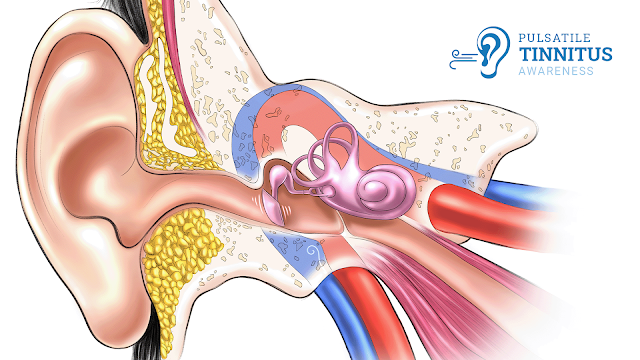Unveiling the Mystery: Pulsatile Tinnitus Causes
Pulsatile tinnitus is a unique form of tinnitus characterized by rhythmic sound perception in sync with the heartbeat. Unlike regular tinnitus, which manifests as a constant ringing or buzzing in the ears, pulsatile tinnitus often indicates an underlying vascular or circulatory issue. While it can be alarming, understanding the various causes of pulsatile tinnitus is crucial for effective management and treatment. In this comprehensive guide, we delve into the intricate web of factors that contribute to this perplexing auditory phenomenon.
Understanding the Anatomy of Pulsatile Tinnitus
Before delving into the causes, it's essential to grasp the underlying anatomy of pulsatile tinnitus. The auditory system is intricately connected to the circulatory system, with blood vessels running close to the inner ear structures. In cases of pulsatile tinnitus, abnormal blood flow or turbulence within these vessels generates sound waves that are perceived as rhythmic pulsations in the ear. This phenomenon can occur unilaterally or bilaterally and may vary in intensity and frequency.
Common Causes of Pulsatile Tinnitus
- Vascular Abnormalities: One of the primary culprits behind pulsatile tinnitus is vascular abnormalities, including arteriovenous malformations (AVMs), vascular tumors, and carotid artery stenosis. AVMs are tangled clusters of blood vessels that disrupt normal blood flow, leading to turbulent flow patterns and audible pulsations. Similarly, tumors such as glomus tumors or acoustic neuromas can exert pressure on nearby blood vessels, causing pulsatile tinnitus.
- Hypertension: High blood pressure is a prevalent risk factor for pulsatile tinnitus. Elevated blood pressure levels can increase the force of blood flow through the arteries, resulting in turbulent flow patterns that manifest as pulsatile sounds in the ear. Managing hypertension through lifestyle modifications and medication is crucial for alleviating symptoms of pulsatile tinnitus associated with this condition.
- Atherosclerosis: Atherosclerosis, a condition characterized by the buildup of plaque within the arteries, can also contribute to pulsatile tinnitus. As the arteries narrow due to plaque accumulation, blood flow becomes restricted, leading to turbulent flow and auditory symptoms. Individuals with a history of cardiovascular disease or risk factors such as smoking, obesity, and diabetes are particularly susceptible to atherosclerosis-related pulsatile tinnitus.
- Middle Ear Disorders: Disorders affecting the middle ear, such as superior semicircular canal dehiscence (SSCD) or patulous eustachian tube, can give rise to pulsatile tinnitus. In SSCD, a gap or hole in the bony covering of the superior semicircular canal allows abnormal sound transmission, resulting in pulsatile symptoms. Similarly, patulous eustachian tube, characterized by the abnormal opening of the eustachian tube, can cause changes in middle ear pressure and auditory sensations.
- Idiopathic Intracranial Hypertension (IIH): Idiopathic intracranial hypertension, formerly known as pseudotumor cerebri, is a condition characterized by increased intracranial pressure without an identifiable cause. In addition to symptoms such as headaches and visual disturbances, individuals with IIH may experience pulsatile tinnitus due to elevated pressure within the cranial cavity. Timely diagnosis and management are essential to prevent complications associated with IIH-related pulsatile tinnitus.
Diagnostic Evaluation and Management
Diagnosing the underlying cause of pulsatile tinnitus typically involves a comprehensive evaluation by an audiologist, otolaryngologist, or vascular specialist. This may include a thorough medical history review, physical examination, auditory tests, and imaging studies such as MRI or CT angiography to assess vascular structures and identify any abnormalities. Once the underlying cause is identified, treatment strategies can be tailored to address the specific condition contributing to pulsatile tinnitus.
Conclusion
Pulsatile tinnitus is a complex auditory phenomenon with multifactorial etiology, ranging from vascular abnormalities to middle ear disorders and systemic conditions. By understanding the various causes and risk factors associated with pulsatile tinnitus, individuals can seek timely medical evaluation and intervention to alleviate symptoms and prevent complications. Whether it's managing hypertension, treating vascular abnormalities, or addressing middle ear disorders, a multidisciplinary approach involving healthcare professionals from different specialties is crucial for optimal management and outcomes.


Comments
Post a Comment